Bài Tập Unit 9 Social Issues Tiếng Anh Lớp 11 Global Success (19.03.2024)
Thầy Thắng
CHUYÊN ĐỀ LỚP 11
15
Ngày đăng: 19-03-2024 08:42:13

UNIT 9. SOCIAL ISSUES
A. LÝ THUYẾT
I. VOCABULARY
1. VOCABULARY
|
No. |
Word |
Part of speech |
Pronunciation |
Meaning |
|
|
alcohol |
(n) |
/ˈælkəhɒl/ |
đồ uống có cồn (rượu, bia …) |
|
|
anti-bullying |
(n) |
/ˈænti/ /ˈbʊliɪŋ/ |
việc chống bắt nạt |
|
|
anxiety |
(n) |
/æŋˈzaɪəti/ |
sự lo lắng |
|
|
campaign |
(n) |
/kæmˈpeɪn/ |
chiến dịch |
|
|
crime |
(n) |
/kraɪm/ |
sự phạm tội, tội phạm |
|
|
cyberbullying |
(n) |
/ˈsaɪbəˌbʊliɪŋ/ |
sự bắt nạt trên mạng xã hội |
|
|
depression |
(n) |
/dɪˈpreʃᵊn/ |
sự trầm cảm |
|
|
lie |
(n) |
/laɪ/ |
lời nói dối |
|
|
overpopulation |
(n) |
/ˌəʊvəˌpɒpjʊˈleɪʃᵊn/ |
sự quá tải dân số |
|
|
policy |
(n) |
/ˈpɒləsi/ |
chính sách |
|
|
poverty |
(n) |
/ˈpɒvəti/ |
sự nghèo đói |
|
|
self-confidence |
(n) |
/self/ /ˈkɒnfɪdəns/ |
sự tự tin vào bản thân |
|
|
victim |
(n) |
/ˈvɪktɪm/ |
nạn nhân |
|
|
admit |
(v) |
/ədˈmɪt/ |
thừa nhận |
|
|
obey |
(v) |
/əˈbeɪ/ |
tuân thủ |
|
|
skip |
(v) |
/skɪp/ |
trốn, bỏ |
|
|
promote |
(v) |
/prəˈməʊt/ |
khuyến khích |
|
|
frighten |
(v) |
/ˈfraɪtᵊn/ |
làm hoảng sợ |
|
|
hesitate |
(v) |
/ˈhezɪteɪt/ |
do dự |
|
|
argue |
(v) |
/ˈɑːɡjuː/ |
tranh cãi |
|
|
pretend |
(v) |
/prɪˈtend/ |
giả vờ |
|
|
apologise |
(v) |
/əˈpɒləʤaɪz/ |
xin lỗi |
|
|
target |
(v) |
/ˈtɑːɡɪt/ |
nhắm tới |
|
|
ashamed |
(adj) |
/əˈʃeɪmd/ |
hổ thẹn |
|
|
drunk |
(adj) |
/drʌŋk/ |
say rượu |
|
|
fashionable |
(adj) |
/ˈfæʃnəbᵊl/ |
hợp thời trang |
|
|
offensive |
(adj) |
/əˈfensɪv/ |
phản cảm |
|
|
pressing |
(adj) |
/ˈpresɪŋ/ |
cấp thiết |
|
|
slim |
(adj) |
/slɪm/ |
mảnh khảnh |
|
|
violent |
(adj) |
/ˈvaɪələnt/ |
bạo lực |
2. COLLOCATIONS/ PHRASES
|
No. |
Word |
Part of speech |
Pronunciation |
Meaning |
|
|
social issue |
(adj-n) |
/ˈsəʊʃəl/ /ˈɪʃuː/ |
vấn đề xã hội |
|
|
social group |
(adj-n) |
/ˈsəʊʃəl/ /ɡruːp/ |
nhóm xã hội |
|
|
the odd one out |
(phrase) |
/ði/ /ɒd/ /wʌn/ /aʊt/ |
người kì lạ, khác biệt |
|
|
physical bullying |
(np) |
/ˈfɪzɪkəl/ /ˈbʊliɪŋ/ |
sự bắt nạt thân thể |
|
|
verbal bullying |
(np) |
/ˈvɜːbəl/ /ˈbʊliɪŋ/ |
sự bắt nạt bằng lời nói |
|
|
social bullying |
(np) |
/ˈsəʊʃəl/ /ˈbʊliɪŋ/ |
bắt nạt về mặt xã hội |
|
|
the poverty line |
(phrase) |
/ðə/ /ˈpɒvəti/ /laɪn/ |
mức nghèo khó |
|
|
peer influence |
(np) |
/pɪər/ /ˈɪnfluəns/ |
ảnh hưởng từ bạn bè |
|
|
peer pressure |
(np) |
/pɪə/ /ˈpreʃə/ |
áp lực từ bạn bè |
|
|
body shaming |
(np) |
/ˈbɒdi/ /ˈʃeɪmɪŋ/ |
sự miệt thị ngoại hình |
|
|
school performance |
(np) |
/skuːl/ /pəˈfɔːməns/ |
thành tích ở trường |
|
|
draw attention to |
(phrase) |
/drɔː/ /əˈtenʃᵊn/ /tuː/ |
thu hút sự chú ý tới |
|
|
control anger |
(v-n) |
/kənˈtrəʊl/ /ˈæŋɡə/ |
kiểm soát sự tức giận |
|
|
have an influence/ impact on |
(phrase) |
/hæv/ /ən/ /ˈɪnfluəns/ / /ˈɪmpækt/ /ɒn/ |
có ảnh hưởng đến |
|
|
live in poverty |
(phrase) |
/lɪv/ /ɪn/ /ˈpɒvəti/ |
sống trong nghèo đói |
|
|
raise awareness of |
(phrase) |
/reɪz/ /əˈweənəs/ /ɒv/ |
tăng nhận thức |
|
|
skip class |
(v-n) |
/skɪp/ /klɑːs/ |
trốn học |
|
|
suffer from |
(vp) |
/ˈsʌfə/ /frɒm/ |
chịu đựng |
|
|
struggle with |
(v, prep) |
/ˈstrʌɡl/ /wɪð/ |
đấu tranh với |
|
|
stand up to |
(vp) |
/stænd/ /ʌp/ /tuː/ |
bảo vệ, chống lại |
|
|
fit in |
(vp) |
/fɪt/ /ɪn/ |
phù hợp, hoà nhập với |
|
|
make fun of |
(phrase) |
/meɪk/ /fʌn/ /ɒv/ |
trêu chọc, chế giễu |
|
|
hang out |
(vp) |
/hæŋ/ /aʊt/ |
đi chơi |
|
|
approve of |
(v, prep) |
/əˈpruːv/ /ɒv/ |
đồng tình với |
3. WORD FORMATION
|
No. |
Word |
Part of speech |
Pronunciation |
Meaning |
|
|
bully |
(v,n) |
/ˈbʊli/ |
bắt nạt/ kẻ bắt nạt |
|
|
bullying |
(n) |
/ˈbʊliɪŋ/ |
sự bắt nạt |
|
|
aware |
(adj) |
/əˈweə/ |
nhận thức |
|
|
awareness |
(n) |
/əˈweənəs/ |
sự nhận thức |
|
|
depression |
(n) |
/dɪˈpreʃᵊn/ |
trầm cảm |
|
|
depressed |
(adj) |
/dɪˈprest/ |
buồn |
|
|
embarrassed |
(adj) |
/ɪmˈbærəst/ |
xấu hổ |
|
|
embarrass |
(v) |
/ɪmˈbærəs/ |
làm cho xấu hổ |
|
|
sympathise |
(v) |
/ˈsɪmpəθaɪz/ |
thông cảm |
|
|
sympathy |
(n) |
/ˈsɪmpəθi/ |
sự đồng cảm |
II. PRONUNCIATION
TÔNG GIỌNG TRONG CÂU HỎI LỰA CHỌN
Trong câu hỏi lựa chọn, mỗi lựa chọn đứng trước từ or sẽ được lên giọng. Chúng ta sẽ xuống giọng ở lựa chọn cuối cùng.
Ví dụ:
- Is peer pressure good ä or bad? æ
- Is this a social ä or environmental issue? æ
III. GRAMMAR
LIÊN TỪ
- Chúng ta dùng các cụm từ và từ nối để nối ý, mệnh đề và câu.
- Một số cụm từ và từ nối thông dụng:
|
STT |
Mục đích |
Từ nối |
Ví dụ |
|
1 |
Để thêm thông tin, ý tưởng |
Moreover Additionally Besides In addition (to) |
- Alcohol is unhealthy for people’s health. Moreover, it affects people’s behaviour negatively. Rượu bia không tốt cho sức khỏe con người. Hơn nữa, nó còn ảnh hưởng tiêu cực đến hành vi của con người. - Regular exercise is essential for maintaining physical fitness. In addition, it can help improve mental health. Tập thể dục thường xuyên là điều cần thiết để duy trì thể lực. Ngoài ra, nó có thể giúp cải thiện sức khỏe tinh thần. - Smoking is harmful to your health. Besides, it can also harm the health of those around you due to secondhand smoke. Hút thuốc có hại cho sức khỏe của bọn. Bên cạnh đó, nó còn có thể gây hại cho sức khỏe của những người xung quanh do hút thuốc thụ động. |
|
2 |
Để thể hiện ý tương phản |
By contrast However Although/ though/ even though In spite of/ Despite |
- Although there are policies to deal with cyberbullying, it remains a serious issue among young people. Mặc dù đã có chính sách giải quyết vấn đề bắt nạt trên mạng, thế nhưng nó vẫn là một vấn đề nghiêm trọng trong giới trẻ. - Smoking is harmful to teens’ health. However, some teenagers find it difficult to say no to their friends when faced with peer pressure to try smoking. Hút thuốc có hại cho sức khỏe của thanh thiếu niên. Tuy nhiên, một số thanh thiếu niên cảm thấy khó từ chối bạn bè khi phải đối mặt với áp lực từ bạn bè buộc phải thử hút thuốc. - Peer pressure has great influence on teens. By contrast, strong family bonds and support can help them face the challenges of peer pressure. Áp lực từ bạn bè có ảnh hưởng lớn đến thanh thiếu niên. Ngược lại, mối quan hệ và sự hỗ trợ mạnh mẽ của gia đình có thể giúp họ đối mặt với những thách thức từ áp lực từ bạn bè. |
|
3 |
Để chỉ lý do |
Because/ as/ since Because of |
- Because of poverty, many families struggle to make a living. Vì nghèo đói nên nhiều gia đình phải vật lộn để mưu sinh. - Since/ as/ because teenagers want to fit in, it can be hard for them to say no to bad influences from their friends. Vì thanh thiếu niên muốn hòa nhập nên các em khó có thể từ chối những ảnh hưởng xấu từ bạn bè. |
|
4 |
Để chỉ kết quả |
Therefore So As a result |
- Overpopulation is a serious problem; therefore, we need to take action to deal with it. Sự quá tải dân số là một vấn đề nghiêm trọng, do đó chúng ta cần phải hành động để giải quyết nó. |
B. THỰC HÀNH
I. PRONUNCIATION
Task 1. Find the word whose underlined part differs from the other three in pronunciation in each of the following questions.
1. A. admit B. argue C. verbal D. approve
2. A. poverty B. body C. offensive D. policy
3. A. frighten B. skip C. physical D. fit
4. A. suffer B. bully C. struggle D. fun
5. A. social B. crime C. control D. confidence
6. A. depression B. pressing C. pretend D. anxiety
7. A. influence B. stand C. drunk D. fashionable
8. A. victim B. promote C. violent D. attention
9. A. campaign B. target C. anger D. group
10. A. sympathy B. hesitate C. persuade D. smoker
Task 2. Find the word that differs from the other three in the position of stress in each of the following questions.
1. A. bully B. suffer C. aware D. shaming
2. A. issue B. target C. verbal D. ashamed
3. A. pretend B. frighten C. victim D. social
4. A. influence B. struggle C. campaign D. anger
5. A. approve B. pressing C. obey D. admit
6. A. sympathise B. attention C. embarrass D. performance
7. A. poverty B. physical C. violent D. permission
8. A. policy B. confidence C. offensive D. alcohol
9. A. hesitate B. depression C. bullying D. sympathy
10. A. argue B. body C. pressure D. promote
II. VOCABULARY
Task 1. Mark the letter A, B, C or D to indicate the correct answer to each of the following questions.
1. Bullying is considered a __________ in many places and can lead to legal consequences.
A. poverty B. crime C. anxiety D. campaign
2. __________ is a serious mental health concern that can result from bullying or peer pressure.
A. Victim B. Lie C. Depression D. Alcohol
3. __________ is a growing concern as technology becomes more common in students’ lives.
A. Overpopulation B. Policy C. Self-confidence D. Cyberbullying
4. Schools often have __________ actions to protect students and maintain a positive learning environment.
A. anti-bullying B. case C. distance D. awareness
5. __________ can sometimes lead students to do bad behaviours such as drinking alcohol, but it can also encourage positive choices.
A. Peer influence B. Social group C. School performance D. Body shaming
6. He is not scared to be the __________. He can say no to the bad things his friends do.
A. poverty line B. odd-one-out C. social issue D. cyberbullying
7. __________ often involves spreading rumours, or cyberbullying through social media.
A. Social bullying B. Verbal bullying C. Peer pressure D. Physical bullying
8. Students should be encouraged to speak out against __________ when they see it happening.
A. social group B. presentation skill C. school performance D. body shaming
Task 2. Choose the correct word to complete each sentence.
1. Building self-confidence can help students stand up to / approve of bullies.
2. Bullying involves hurtful actions, such as fitting in / making fun of others’ appearance.
3. Parents and teachers can have an influence on / ask permission students’ attitudes toward bullying and peer pressure.
4. Students who suffer from /fit in bullying may experience long-lasting emotional changes.
5. Students often struggle / hang out with friends who share their interests and values.
6. Some students control anger / live in poverty, which can make them easier to be the target of bullying.
Task 3. Complete each following sentence with a suitable verb (The form of the verb can be changed if necessary)
|
admit |
obey |
skip |
promote |
frighten |
|
hesitate |
argue |
pretend |
apologise |
target |
1. She had to _______________________ to Minh as she bullied him in the past.
2. Bullying can _______________________ students and affect their mental health.
3. She decided to _______________________ that she had been a victim of bullying.
4. Some students _______________________ to be someone they’re not to fit in with their peers.
5. Don’t _______________________ to report bullying if you see someone else being bullied.
6. He chose to _______________________ class to avoid being bullied at school.
7. Bullying often _______________________ individuals based on their differences.
8. Some students do not _______________________ their school’s rules. They still paint their nails or colour their hair.
9. They often _______________________ with each other. They might get into a fight later.
10. The school aims to _______________________ an environment without bullying behaviours.
Task 4. Match each word on the left with the word that has OPPOSITE meaning on the right.
Task 5. Complete each sentence using the correct form of the word in brackets.
1. _______________________ can make people feel unconfident about themselves and their appearance. (BULLY)
2. It’s important to ______________________ with those who have been bullied and offer them support. (SYMPATHY)
3. It’s essential to raise _______________________ of the harmful effects of bullying in schools. (AWARE)
4. She didn’t want to tell anyone about the bullying because she was too _______________________. (EMBARRASS)
5. She became _______________________ after facing bullying from some classmates. (DEPRESSION)
III. GRAMMAR
Task 1. Choose the correct word to complete each sentence.
1. Therefore / Although peer influence is a common part of school life, it can sometimes lead to students making unusual choices.
2. In addition / By contrast to peer pressure affecting academic choices, it can also influence students to try risky behaviours.
3. Bullying has many forms. As a result / an addition, people should be aware of them.
4. Some students stand up to bullying. However / since, many students choose to ignore it.
5. Because of / Because the bullying, many students felt anxious and didn’t want to go to school.
6. Some classmates in Binh’s class made fun of him besides / since he wore glasses.
7. Hang was bullied; however / therefore, his parents talked to the school principal.
8. Besides / Furthermore feeling hurt by the bullying, Xuan found it hard to focus on her homework.
Task 2. Complete each sentence with a suitable linking word or phrase.
|
although |
despite |
in addition |
however |
|
as |
because of |
therefore |
moreover |
1. My friends wanted me to skip class to go to the cinema; ____________________, I went to school instead.
2. I didn’t want to lie; ____________________, I told the truth about what happened.
3. ____________________ all of my friends joined the art club, I joined it, too.
4. ____________________ to feeling pressured to smoke, I started hanging out with a new group of friends.
5. ____________________ I didn’t like the idea, I wore the same trendy clothes as my friends to fit in.
6. I did not do well in the test ____________________ staying up late.
7. ____________________ the school rules, many students painted their nails when going to school.
8. My friends wanted me to participate in the school talent show. ____________________, they encouraged me to sing in front of everyone.
Task 3. Combine each pair of sentences, beginning with the given word(s).
1. Verbal bullying is a common issue at school but many students are not aware of it. (HOWEVER)
______________________________________________
2. Cyberbullying can negatively impact students’ academic performance and it can cause depression as well. (MOREOVER)
______________________________________________
3. Students often want to be liked by their peers so they may sometimes do things they normally don’t. (AS A RESULT)
______________________________________________
4. Bullying at school can have serious effects on the victims so it’s essential to prevent bullying. (THEREFORE)
______________________________________________
5. While some students stand up to bullying, others remain silent for the fear of the consequences. (BY CONTRAST)
______________________________________________
IV. READING
Task 1. Read the following passage and mark the letter A, B, C or D to indicate the correct word or phrase that best fits each of the numbered blanks.
Sometimes, (1) ________, the stresses in your life can actually come from your peers. They may pressure you (2) ________ doing something you’re uncomfortable with, such as drinking or smoking.
The pressure to conform to do what others are doing can be powerful and hard (3) ________. A person might feel pressure to do something just because others are doing it. Peer pressure can influence a person to do something that is relatively harmless or something that has more serious consequences. (4) ________ in to the pressure to dress (5) ________ certain way is one thing - going along with the crowd to drink or smoke is another.
People may feel pressure to conform so they fit (6) ________ or are accepted, or so they don’t feel awkward or uncomfortable. When people are (7) ________ of what to do in a social situation, they naturally look to others about what is and isn’t acceptable.
The people who are most easily influenced will (8) ________ someone else’s lead first. Then others (9) ________ go along, too - so it can be easy to think, “It must be OK. Everyone else is doing it. They must know (10) ________ they’re doing.” Before you know it, many people are going along with the crowd - perhaps on something they might not otherwise do.
Adapted from: https://kidshealth.org/en/teens/peer-pressure.html
1. A. therefore B. though C. neither D. as
2. A. on B. of C. into D. through
3. A. to resist B. resist C. resisting D. being resisted
4. A. Given B. Give C. Gave D. Giving
5. A. the B. each C. a D. Ø
6. A. from B. in C. on D. to
7. A. unsure B. drunk C. reliable D. practical
8. A. contact B. argue C. skip D. follow
9. A. should B. may C. must D. need
10. A. which B. that C. what D. who
Task 2. Read the following passage and choose the correct answer to each of the following questions.
It is very common for young people to look towards other people who are in the same situation. Unfortunately, this is not a very healthy action as most people make bad decisions, but because young people don’t know any better, they will decide to join in. There are, however, cases in which being influenced by your peers could be very beneficial to students.
Believe it or not, but positive peer pressure is more common than negative peer pressure. An example of positive peer pressure is when all of your friends are encouraging you to join the debate team to help deal with a fear of speaking to new people. This creates confidence and can lead to positive effects throughout your life.
People are more likely to engage in popular positive events. If something is popular and good, people will feel pressure to do something good and it is popular so it will not be criticised. This creates a positive feedback loop as when more people do the act, more people will see it and would like to engage in it. This is why positive peer pressure is more widespread than negative peer pressure. Positive peer pressure is more likely to be promoted and passed on and it sets up people for success.
On the other hand, negative peer pressure has a bigger impact on young people based on the American Psychological Association because the negative peer pressure effects, they have more long term effects. This is because most of the negative effects are more addictive rather than the positive effects.
Negative peer pressure causes more damage than positive peer pressure. An example of negative peer pressure is when a friend convinces you to start drinking alcohol. If a student starts drinking alcohol at a young age, it could hinder growth of the brain. According to National Center for Biotechnology Information, “Studies reveal that youth who started drinking before age 15, compared to those who waited until they were 21, were 12 times more likely to be unintentionally injured while under the influence of alcohol, 7 times more likely to be in a motor vehicle crash after drinking, and 10 times more likely to have been in a physical fight after drinking.” Most of these negative effects are highly addictive and are spread through friend groups.
Adapted from: https://altahawkeye.org/2418/uncategorized/what-is-peer-pressure-and-how-does-it-affect-students/
1. Which of the following can be the best title for the passage?
A. The Appearance of Peer Pressure Among Young People
B. The Disadvantages of Peer Pressure on Teenagers
C. The Positive and Negative Effects of Peer Pressure
D. The Impact of Alcohol on Youth Development
2. Why do many young people tend to follow their peers even if they make bad decisions?
A. Because they have a strong sense of individuality.
B. Because they know more about making better choices.
C. Because they often lack knowledge and experience.
D. Because they prefer to be criticised for their decisions.
3. The word “they” in paragraph 1 refers to _________.
A. decisions B. cases C. peers D. young people
4. The word “loop” in paragraph 2 is closest in meaning to _________.
A. site B. circle C. entry D. topic
5. The word “widespread” in paragraph 2 is closest in meaning to _________.
A. common B. pressing C. central D. sustainable
6. The word “it” in paragraph 2 refers to _________.
A. negative peer pressure B. positive peer pressure
C. loop D. success
7. According to the passage, what can be an effect of positive peer pressure?
A. It can lead to more addictive behaviours.
B. It often results in criticism from others.
C. It can encourage confidence and have positive long-term effects.
D. It is less likely to be promoted and passed on.
8. What is one specific consequence of starting drinking alcohol before age 15?
A. They are 10 times more likely to be in a physical fight after drinking.
B. They are 7 times more likely to engage in popular positive events.
C. They are 12 times more likely to have better brain growth.
D. They are more likely to join the debate team.
9. According to the passage, what is an example of negative peer pressure mentioned?
A. convincing a friend to start drinking alcohol
B. promoting participation in popular positive events
C. encouraging friends to join the debate team
D. making peers study harder
10. Which of the following is NOT true according to the passage?
A. Young people often look towards other people who are in the same situation as them.
B. Students drinking before age 15 are 10 times more likely to be in a motor vehicle crash after drinking.
C. Positive peer pressure encourages people to do good things.
D. Negative peer pressure can lead to highly addictive behaviours.
Task 3. Read the passage and decide whether the following statements are true (T), false (F) or not given (NG).
The most common type of harassment youth encounter online is name-calling. Some 42% of teens say they have been called offensive names online or via their cell phones. Additionally, about a third (32%) of teens say someone has spread false rumours about them on the internet, while smaller shares have had someone other than a parent constantly ask where they are, who they’re with or what they’re doing (21%) or have been the target of physical threats online (16%).
While texting and digital messaging are a central way teens build and maintain relationships, this level of connectivity may lead to potential problems. One-quarter of teens say they have been sent offensive images they didn’t ask for, while 7% say someone has shared their offensive images without their knowing. These experiences are particularly concerning to parents. Fully 57% of parents of teens say they worry about their teen receiving or sending offensive images, including about one-quarter who say this worries them a lot, according to a separate Center survey of parents.
The vast majority of teens (90% in this case) believe online harassment is a problem that affects people of their age, and 63% say this is a major problem. But majorities of young people think key groups, such as teachers, social media companies and politicians are failing to tackle this issue. By contrast, teens have a more positive assessment of the way parents are addressing cyberbullying.
Adapted from: https://www.pewresearch.org/internet/2018/09/27/a-majority-of-teens-have-experienced-some-form-of-cyberbullying/
__________ 1. The most common type of online harassment among youth is spreading false rumours.
__________ 2. Approximately 42% of teens have experienced name-calling before.
__________ 3. About 21% of teens have been the target of physical threats online.
__________ 4. One-third of teens have received offensive images they didn’t request.
__________ 5. Only 7% of teens have shared offensive images of themselves online.
__________ 6. A significant number of parents worry about their teens receiving or sending offensive images.
__________ 7. Most young people believe that teachers are able to tackle online harassment effectively.
__________ 8. Over 60% of teens believe online harassment is a major problem for people of their age.
__________ 9. Social media companies are thought to address online harassment more effectively than politicians.
__________ 10. Teens primarily use email and social media for communication.
V. WRITING
Task 1. Write meaningful sentences based on the given clues (form of the verb can be changed if necessary)
1. It / not / always / easy / stand / to / peer pressure.
________________________________________
2. not / hesitate / talk / adult / when / situation / look / dangerous.
________________________________________
3. Body shaming / one / of / common / forms / physical bullying.
________________________________________
4. Girls / younger students / more / likely / victims / bullying.
________________________________________
5. Teenagers / experience / pressure / fit / social groups.
________________________________________
Task 2. Rewrite each sentence using the given word in brackets as long as its meaning stays the same as the original one.
1. Although we faced many difficulties, we successfully ran an anti-bullying campaign. (SPITE)
-> We ________________________________________
2. As bullying is a pressing issue at school, it needs immediate action. (BECAUSE OF)
-> Bullying ________________________________________
3. Minh asked Hung to skip class to go to the park but Hung did not agree. (HOWEVER)
-> Minh ________________________________________
4. Body shaming not only creates a negative environment for students but also affects their self-confidence. (BESIDES)
-> Body ________________________________________
5. Hien suffered from depression because she was a victim of bullying. (SINCE)
-> Hien ________________________________________
Task 3. Write an email (120 words) to a friend to share your ideas about anti-bullying at your school.
________________________________________
________________________________________
________________________________________
________________________________________
________________________________________
VI. LISTENING
Task 1. Listen to a talk about peer pressure and complete the table with NO MORE THAN 2 words. You can listen to each recording TWICE.
|
POSITIVE PEER PRESSURE |
NEGATIVE PEER PRESSURE |
|
Good behaviours and healthy habits - Students are motivated to do well as friends are high (1) _____________________. - Students eat healthily as their friends do so. |
Bullying - Victims can suffer from mental issues such as anxiety and (4) _____________________ - Victims find it hard to concentrate on their studies. |
|
(2) _____________________ Building a network of friends and encouraging (3) _____________________ |
Risky behaviours Drinking alcohol and smoking for fear of not (5) _____________________ and appearing unpopular |
Task 2. Listen to the recording and decide if the statements are TRUE (T) or FALSE (F). You can listen to the recording TWICE.
___________ 1. Amber felt like there was no one she could trust at school.
___________ 2. Amber told her mother about being called “fat” at school.
___________ 3. Amber finally could open up with someone at school.
___________ 4. Words cannot badly affect how someone thinks of themselves.
___________ 5. Students are encouraged to always tell the bully to stop.
VII. SPEAKING
Task 1. Answer the following questions
1. Do you experience peer pressure at school? Why do you experience it?
________________________________________
________________________________________
________________________________________
________________________________________
2. In your opinion, how does body shaming affect students?
________________________________________
________________________________________
________________________________________
________________________________________
Task 2. Describe a time when you encountered or witnessed cyberbullying in 2-3 minutes.
________________________________________
________________________________________
________________________________________
________________________________________
C. BÀI KIỂM TRA
Mark the letter A, B, C or D to indicate the word whose underlined part differs from the other three in pronunciation in each of the following questions.
Question 1: A. pretend B. target C. hesitate D. depression
Question 2: A. violent B. crime C. policy D. anxiety
Mark the letter A, B, C or D to indicate the word that differs from the other three in the position of the primary stress in each of the following questions.
Question 3: A. alcohol B. physical C. poverty D. attention
Question 4: A. suffer B. promote C. campaign D. ashamed
Mark the letter A, B, C or D to indicate the correct answer to each of the following questions.
Question 5: Many students experienced body shaming as they are not _________.
A. drunk B. slim C. painful D. offensive
Question 6: They are _________ fun of him because of his clothes.
A. hanging B. living C. making D. controlling
Question 7: Living below the _________ is a big problem for some students.
A. school performance B. peer influence C. social group D. poverty line
Question 8: He is asking his parents to buy him a new smartphone so that he can _________ with his new friends.
A. stand up B. fit in C. take off D. call on
Question 9: He _________ to be sick because he did not want to go to school.
A. targeted B. apologised C. argued D. pretended
Question 10: I do not approve _________ what you said. Peer pressure sometimes can be positive.
A. in B. on C. off D. of
Question 11: _________ bullying is a serious bullying form. The bully often uses bad words to attack the victim.
A. Verbal B. Social C. Cyber D. Physical
Question 12: Some students may _________ class to fit in with certain groups, but it’s crucial to understand the value of attending all your classes.
A. skip B. attend C. go D. obey
Question 13: It’s often safer to stay with your friends or in a group, _________ bullies are less likely to target a group of people.
A. although B. besides C. because D. as a result
Question 14: Peer pressure can encourage students to study harder. _________, it leads to better school performance.
A. In addition B. Therefore C. Despite D. Since
Question 15: _________ some students are living in poverty, they are still very positive about the future.
A. As B. Besides C. Moreover D. Although
Question 16: _________ the negative impact on students’ mental health, cyberbullying can also affect their academic performance.
A. As a result B. In spite of C. Besides D. Because of
Question 17: Teens often want to hang _________ with friends who share their interests and values.
A. up B. on C. in D. out
Question 18: _________ efforts of the awareness campaign, some students continue to participate in body shaming their friends.
A. Despite B. Moreover C. As a consequence D. In addition
Question 19: Building confidence in students is essential for their success in school; _________, it plays a crucial role in their overall personal development.
A. moreover B. therefore C. even though D. because
Mark the letter A, B, C or D to indicate the sentence that best completes each of the following exchanges.
Question 20: Mai and Long are talking.
Mai: I am afraid I cannot make it to the anti-bullying campaign tomorrow. - Long: _________.
A. You can say that again. B. It was kind of you to say it.
C. That’s too bad. D. Nothing too much, please.
Question 21: Nam and Chi are talking.
Nam: My sister has been suffering from body shaming at school. - Chi: _________.
A. Don’t mention it. B. Poor you.
C. Wait a second. D. I’m sorry to hear that.
Mark the letter A, B, C, D to indicate the word(s) CLOSEST in meaning to the underlined word(s) in each of the following questions.
Question 22: Many students at our school try to dress in a stylish way to fit in with other students.
A. fashionable B. funny C. major D. verbal
Question 23: Parents and school staff are working together to find solutions to the urgent issue of bullying.
A. violent B. drunk C. pressing D. aware
Mark the letter A, B, C, D to indicate the word(s) OPPOSITE in meaning to the underlined word(s) in each of the following questions.
Question 24: Students should be encouraged to report any offensive bullying they witness or experience.
A. pleasant B. annoying C. slim D. illegal
Question 25: Anti-bullying campaigns aim to promote awareness of the effects of physical bullying.
A. develop B. prevent C. argue D. frighten
Mark the letter A, B, C or D to indicate the underlined part that needs correction in each of the following questions.
Question 26: In a group of friends who all love sports, Mai is often the odd-one-in as she prefers reading books.
A. who B. in C. as D. reading
Question 27: Many students struggle on the emotional impact of bullying, which can lead to anxiety and depression.
A. on B. emotional C. which D. to
Question 28: The cyberbullying caused Ly a lot of stress and anxiety; however, she decided to limit her social media use.
A. caused B. however C. limit D. use
Read the following passage and mark the letter A, B, C, or D to indicate the correct word that best fits each of the numbered blanks.
Peers affect each other just by spending time together. You learn from them, and they learn from you. It’s natural to listen to and learn from other people your age.
Peers can affect you in many ways. For example, you might see what teens in your class are wearing, like it, and wear something like that, too. It (29) _________ both ways. Your peers might watch what you do and start doing it, too.
Peers can influence each other in good ways. Maybe a teen in your science class taught you an easy way to remember the planets in the solar system. Maybe you admire a friend (30) _________ is a good sport, and you try (31) _________ more like them. Maybe you got others excited about your new favourite book and now everyone’s reading it.
But peers can also influence each other in ways that aren’t so good. They might try to pressure you (32) _________ doing something you know is wrong. For example, what if a few teens in school try to get you to (33) _________ class with them? What if your soccer teammate tries to convince you to be mean to another player and never pass them the ball? What if a kid in the neighbourhood wants you to drink alcohol with them?
Adapted from: https://kidshealth.org/en/kids/peer-pressure.html
Question 29: A. goes B. makes C. takes D. sets
Question 30: A. which B. whom C. who D. why
Question 31: A. being B. to be C. be D. been
Question 32: A. of B. from C. into D. with
Question 33: A. target B. consider C. argue D. skip
Read the following passage and mark the letter A, B, C or D to indicate the correct answer to each of the questions.
Bullying leads to a decrease in academic performance. A study by CDC researchers showed that 12.9% of teenagers who missed school due to safety concerns feared bullying.
Victims of bullying may also avoid participating in class for fear of drawing attention to themselves and getting bullied. They may then become labelled as low achievers, putting them at an even higher risk of being targeted by bullies.
Like all forms of bullying, physical bullying can cause emotional change. It makes the victims feel unconfident and think less of themselves. This leads to feelings of shame, isolation, and despair. Moreover, the child may lose interest in playing or activities they previously enjoyed and engage in harmful behaviour, such as self-harm. These actions lead to more negative feelings and thoughts, creating a self-destructive cycle. In victims with existing depression and anxiety, bullying can make these conditions worse. Besides the physical injuries, victims may get from the attacks, they may also develop health issues, such as somatization. Somatization includes physical symptoms caused by psychological or emotional factors. For instance, the child may complain about headaches, body pain, or tiredness.
Source: https://www.positiveaction.net/blog/physical-bullying
Question 34: What is the main idea of this passage?
A. The appearance of physical bullying among teenagers
B. The emotional and health effects of physical bullying on victims
C. The positive effects of bullying on academic performance
D. The strategies to prevent bullying in schools
Question 35: The word “they” in paragraph 2 refers to _________.
A. researchers B. achievers C. victims D. teenagers
Question 36: The word “despair” in paragraph 3 is closest in meaning to _________.
A. aim B. anger C. policy D. depression
Question 37: What is somatization as mentioned in the passage?
A. the fear of bullying
B. physical injuries resulted from bullying
C. physical symptoms caused by psychological or emotional factors
D. a type of bullying behaviour
Question 38: Which of the following is NOT true according to the passage?
A. Victims with existing depression can experience more serious conditions.
B. Victims avoid participating in class as they do not want to be noticed.
C. Victims of bullying may lead to health issues like somatization.
D. Victims of bullying may become labelled as high achievers.
Read the following passage and mark the letter A, B, C or D to indicate the correct answer to each of the questions.
Assessing law and policy responses
In the past 15 years, all 50 states and the District of Columbia have adopted or revised anti-bullying laws. While this legislative action is promising, few studies have measured the actual impact of anti-bullying laws and policies.
Law has played a key role in responding to many public health issues, from infectious diseases to road safety. To ensure it does the same for bullying prevention, a process for continually assessing and refining anti-bullying laws and policies is needed, according to the Academies report.
Among other things, the Academies report calls for an annual meeting among policymakers, social scientists and professionals who work with children to review research that assesses the implementation and effect of anti-bullying laws and policies. The aim is to develop better evidence and ensure that research informs decisions Congress and the state legislatures make to address bullying.
Identifying bullying
Research shows that many schools and teachers continue to have trouble identifying bullying and deal with it successfully.
An essential step to identification of bullying is training for teachers and others who work with children and adolescents. As the Academies report recommends, “evidence-informed bullying prevention training should be provided for individuals, both professionals and volunteers, who work directly with children and adolescents on a regular basis.”
The report notes that such training programs must be ongoing and evaluated to ensure that professionals and volunteers who work with youth can effectively identify bullying and intervene appropriately.
Adapted from: https://theconversation.com/why-bullying-needs-more-efforts-to-stop-it-58678
Question 39: Which of the following can be the best title for the passage?
A. The Impact of Anti-Bullying Laws
B. The Challenges of Identifying Bullying
C. The Need for Training on Bullying Prevention
D. Ways to Promote Anti-Bullying Efforts
Question 40: The word “it” in paragraph 2 refers to __________.
A. role B. safety C. bullying D. law
Question 41: What does the Academies report suggest regarding the assessment of anti-bullying laws and policies?
A. It calls for a one-time meeting to discuss the impact of these laws.
B. It recommends constant assessment and refinement of anti-bullying laws and policies.
C. It suggests eliminating anti-bullying laws altogether.
D. It suggests leaving the assessment of these laws to individual states.
Question 42: The word “implementation” in paragraph 3 is closest in meaning to __________.
A. application B. failure C. report D. training
Question 43: According to the report, what is essential for the identification of bullying?
A. regular evaluation B. legislative action
C. training for professionals and volunteers D. parents and families
Question 44: The word “ongoing” in paragraph 5 is closest in meaning to __________.
A. harmful B. regular C. continuous D. simple
Question 45: Which of the following is NOT true according to the passage?
A. All 50 states and the District of Columbia have updated anti-bullying laws in the last 15 years.
B. A lot of research has been done on the impact of anti-bullying laws.
C. The Academies report requests an annual meeting to assess anti-bullying laws.
D. Identifying and handling bullying remains a challenge for many schools and teachers.
Mark the letter A, B, C or D to indicate the sentence that is closest in meaning to each of the following questions.
Question 46: More and more students are using social media so cyberbullying is becoming more common.
A. More and more students are using social media; therefore, cyberbullying is becoming more common.
B. More and more students are using social media; however, cyberbullying is becoming more common.
C. More and more students are using social media because cyberbullying is becoming more common.
D. More and more students are using social media despite cyberbullying is becoming more common.
Question 47: Van is experiencing body shaming at school so she wants to get slim.
A. Van is experiencing body shaming at school; moreover, she wants to get slim.
B. Van wants to get slim because she is experiencing body shaming at school.
C. Van wants to get slim although she is experiencing body shaming at school.
D. Van is experiencing body shaming at school because she wants to get slim.
Question 48: I asked her not to post bad comments about other people on social media but she still did it.
A. I asked her not to post bad comments about other people on social media; besides, she still did it.
B. Though I asked her not to post bad comments about other people on social media, she still did it.
C. I asked her not to post bad comments about other people on social media; as a result, she still did it.
D. In addition to asking her not to post bad comments about other people on social media, she still did it.
Mark the letter A, B, C or D to indicate the sentence that best combines each pair of sentences in the following questions.
Question 49: Cyberbullying can negatively affect students’ academic performance. It can also cause some health problems.
A. Cyberbullying can negatively affect students’ academic performance, despite it can cause some health problems.
B. Cyberbullying can negatively affect students’ academic performance; moreover, it can cause some health problems.
C. Cyberbullying can negatively affect students’ academic performance; however, it can cause some health problems.
D. Cyberbullying can negatively affect students’ academic performance; otherwise, it can cause some health problems.
Question 50: An was suffering from anxiety. She was physically bullied at school.
A. An was suffering from anxiety as she was physically bullied at school.
B. An was suffering from anxiety although she was physically bullied at school.
C. An was suffering from anxiety so she was physically bullied at school.
D. An was suffering from anxiety in spite of being physically bullied at school.
---THE END---
Giải đáp mọi thắc mắc trong đề - mua bản word và đáp án vui lòng liên hệ Zalo: 034 8371 758
Theo dõi fanpage để cập nhật nhanh các bài tập và đề kiểm tra mới nhất.
https://www.facebook.com/profile.php?id=61555984765050
Bài Viết Liên Quan

Unit 6 Preserving Our Heritage Tiếng Anh Lớp 11 Global Success (13.02.2025)

Unit 6 Preserving Our Heritage Tiếng Anh Lớp 11 Global Success (13.02.2025)

Unit 6 Preserving Our Heritage Tiếng Anh Lớp 11 Global Success (11.02.2025)
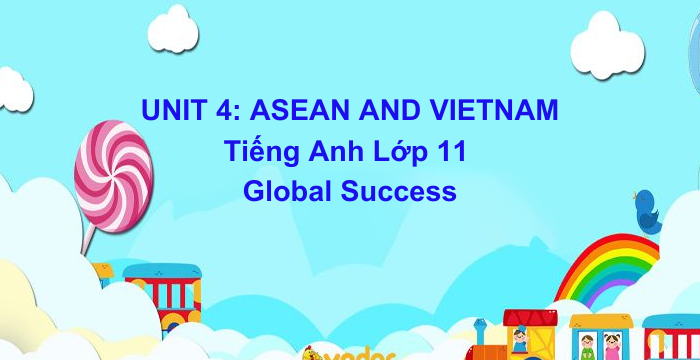
Bài Tập Unit 4 ASEAN AND VIETNAM Tiếng Anh Lớp 11 Global Success (28.11.2024)

Bài Tập Bổ Trợ UNIT 2 THE GENERATION GAP Tiếng Anh Lớp 11 Global Success (22.10.2024)
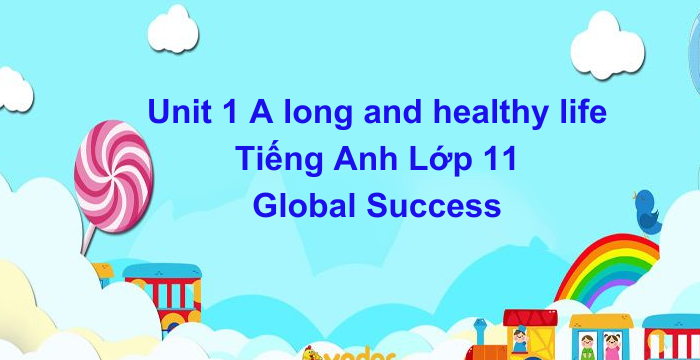
Bài Tập Bổ Trợ UNIT 1 A LONG AND HEALTHY LIFE Tiếng Anh Lớp 11 Global Success (02.10.2024)

Bài Tập Bổ Trợ UNIT 1 A LONG AND HEALTHY LIFE Tiếng Anh Lớp 11 Global Success (01.10.2024)

Bài Tập Bổ Trợ UNIT 1 A LONG AND HEALTHY LIFE Tiếng Anh Lớp 11 Global Success (25.08.2024)

Bài Tập UNIT 5 GLOBAL WARMING Tiếng Anh Lớp 11 Global Success (08.06.2024)

Bài Tập Unit 4 ASEAN AND VIETNAM Tiếng Anh Lớp 11 Global Success (07.06.2024)

Bài Tập Unit 3 Cities Of The Future Tiếng Anh Lớp 11 Global Success (31.05.2024)

Bài Tập Unit 2 The generation gap Tiếng Anh Lớp 11 Global Success (30.05.2024)

Bài Tập Unit 1 A long and healthy Life Tiếng Anh Lớp 11 Global Success (21.05.2024)

File Nghe Unit 10 The Ecosystem Tiếng Anh Lớp 11 Global Success (14.04.2024)

Bài Tập Unit 9 Social Issues Tiếng Anh Lớp 11 Global Success (12.04.2024)

Bài Tập Unit 9 Social Issues Tiếng Anh Lớp 11 Global Success (2.04.2024)

Bài Tập Unit 10 The Ecosystem Tiếng Anh Lớp 11 Global Success (1.04.2024)

File Nghe Unit 9 Social Issues Tiếng Anh Lớp 11 Global Success (21.03.2024)
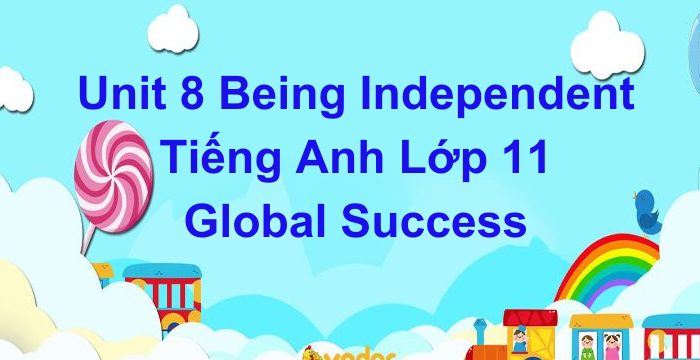
Unit 8 UNIT 8: Being Independent Tiếng Anh Lớp 11 Global Success(19.03.2024)

Revision On Unit 7 Education Options For School-Leavers Tiếng Anh Lớp 11 Global Success 22.02.2024

File Nghe Unit 8 Being Independent Tiếng Anh Lớp 11 Global Success 19.02.2024

Unit 8 Being Independent Tiếng Anh Lớp 11 Global Success 19.02.2024

File Nghe Tiếng Anh Lớp 11 Global Success Unit 7 Education Options For School-Leavers

Unit 7 Education Options For School-Leavers Tiếng Anh Lớp 11 Global Success

Unit 7 Education Options For School-Leavers Tiếng Anh Lớp 11 Global Success

File Nghe Tiếng Anh Lớp 11 Global Success Unit 6 Preserving Our Heritage

Bài Tập Unit 6 Preserving Our Heritage Tiếng Anh Lớp 11 Global Success
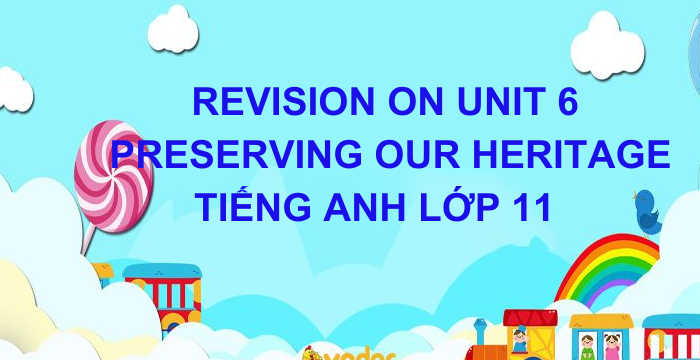
Revision On Unit 6 Preserving Our Heritage Tiếng Anh Lớp 11 Global Success

Unit 6 Preserving Our Heritage Tiếng Anh Lớp 11 Global Success
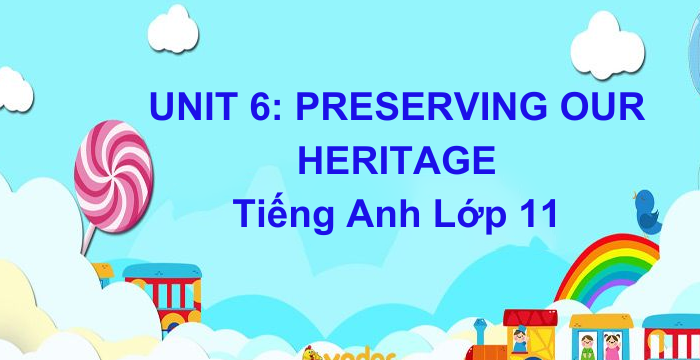
Trắc Nghiệm Unit 6 Preserving Our Heritage Tiếng Anh Lớp 11 Global Success

Bài Đăng Gần Đây

Đề Kiểm Tra Cuối Kì 1 Tiếng Anh Lớp 9 Global Success (23.12.2025)

Đề Kiểm Tra Cuối Kì 1 Tiếng Anh Lớp 6 Global Success (23.12.2025)

Đề Kiểm Tra Cuối Kì 1 Tiếng Anh Lớp 7 Global Success (22.12.2025)

Đề Cương Ôn Tập Cuối Học Kì 1 Tiếng Anh Lớp 11 Global Success (20.12.2025)

